August 27, 2017
Martha O'Kennon
What a difference a few days of coolish (at least not horribly hot and humid) can make in one's outlook! Now I can go out and walk around for more than an hour and not really notice the weather! I told you last week that the asters and goldenrod were now blooming. But actually, the asters are turning purplish in the Back Yard only. So we're expecting the other milestone for asters in the coming days. There are plants with many buds ready to pop open when I'm not looking! If you examine the picture carefully (maybe with an extra click or two), you might see the legs of a crab spider trying to hide from me! The aptly named August Orange is still blooming in the middle south garden - what a treat to see that color - and the water lilies are now blooming in 3 colors. If you look carefully, you might spot a small Green Frog in the midst of the flowers! Click on the picture to see the enlarged Froggy. He has decided that even if I walk a bit too abruptly near him he can just pop into the water and hide for a while.
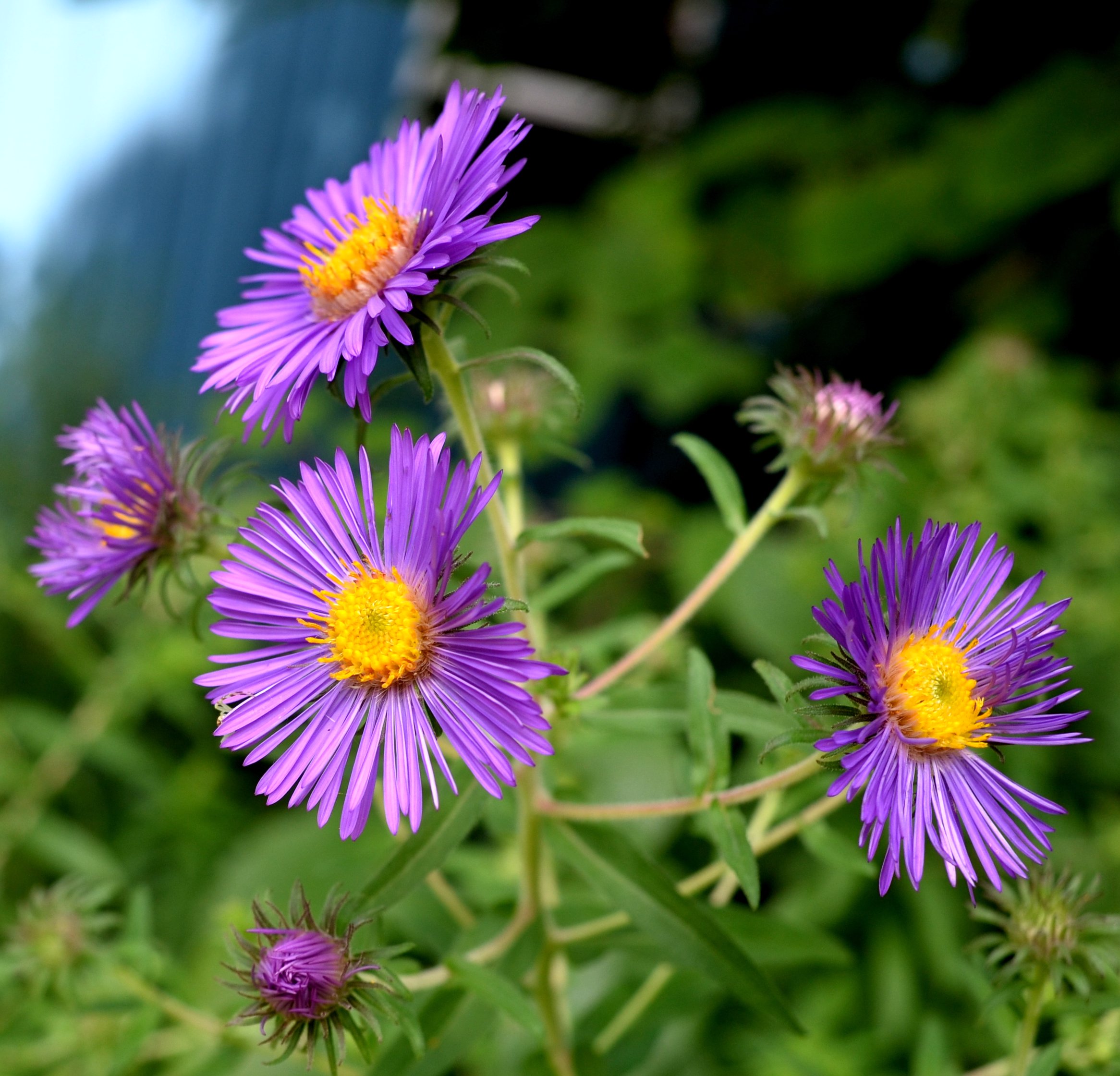


Remember that there is information in the name of the file for each image. You can see it by mousing over the image - look at the lower left of the screen. Or you can click on the image to get to the (usually) larger image. Then the info is displayed in the address line above. Sometimes the second click will actually display a different view of the original image.
Thank goodness for goldenrod! Here is one green aphid in a whole spray of it! Now is when our bees and wasps go crazy. Ones that usually fly right away are tempted to stay long enough for the giantess to take their pictures, though they draw the line at posing in a particular way. This little bumblebee for example would usually have been looking over its shoulder, wherever that is. Here's a little green sweat bee, and a couple of minutes later, this little greyish bee showed up on one of the flowers on that purplish "shamrock".
,
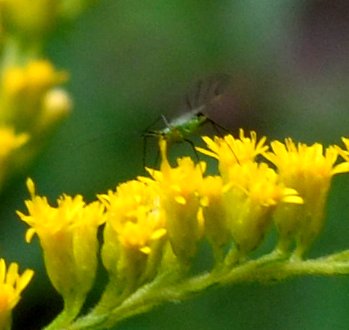
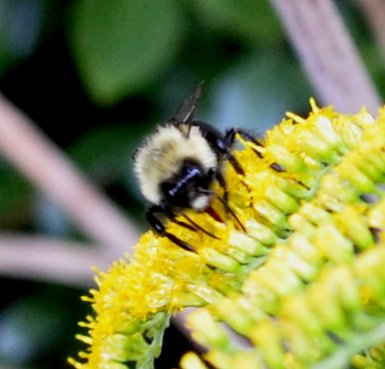
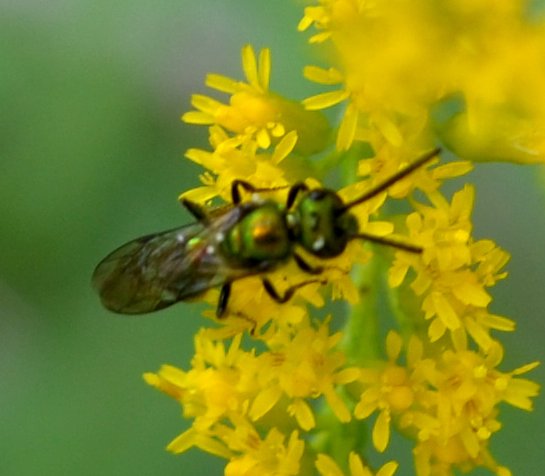
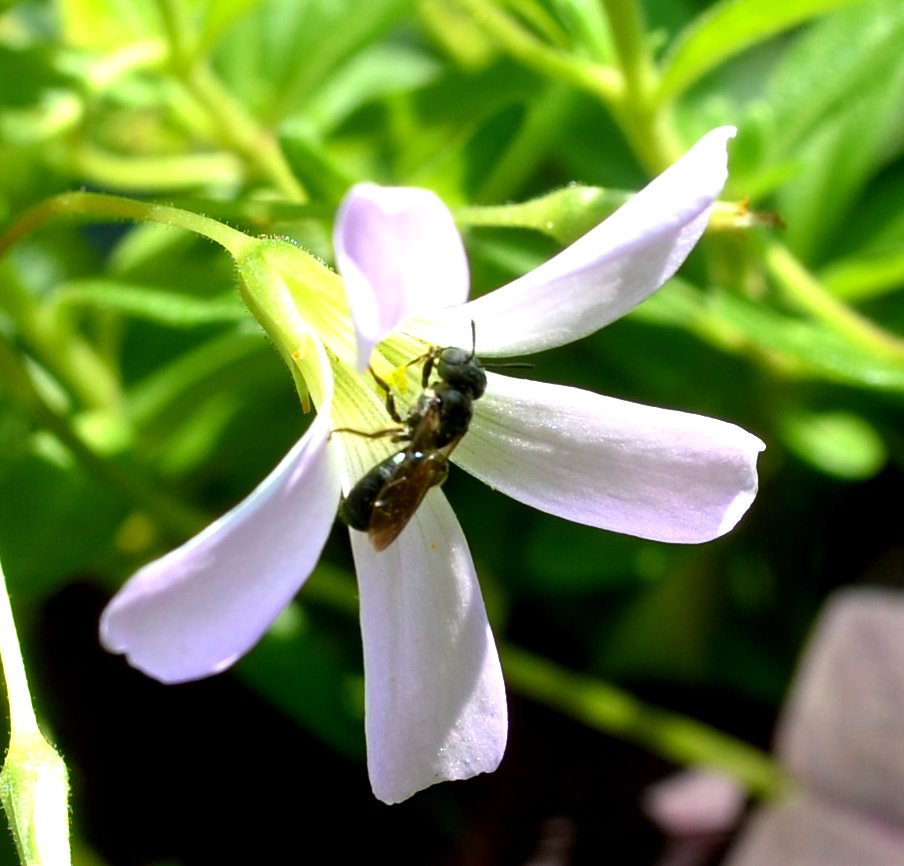
That Black Blister Beetle (now Black Aster Bug - see note to August 20 Blog) moved to a new head of not-quite-blooming goldenrod, but this little Asian Lady Beetle sat on the same spot on the side of the shop for three days. I hope it's all right. And here's a tiny redbud bruchid (a kind of weevil that eats the seeds from the inside of the redbud pods). Last of all, the red monster lily-leaf eater, who was very hard on my tiger lilies even though I picked off any I could see.
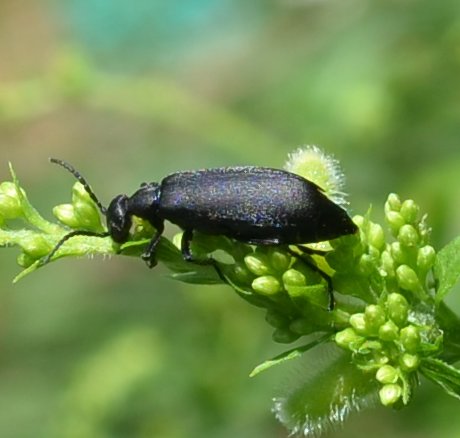
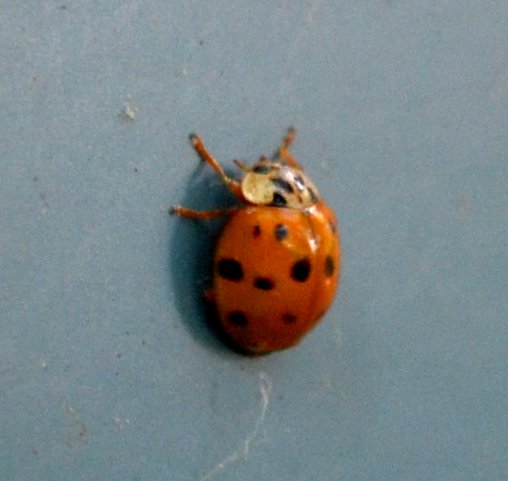
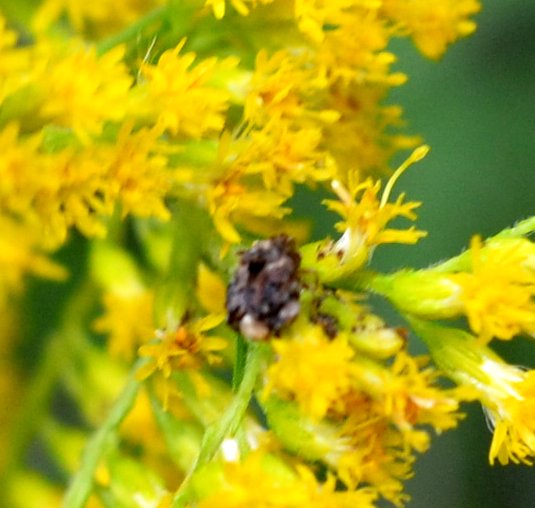

This tiny assassin bug nymph was hard to photograph as the wind was pulling the goldenrod back and forth viciously. Later on the other side of the house I spotted this fat little nymph a stage or two farther along. Here is what I wrote down leafhopper by, but I really think it's one of the planthoppers because of the shape of its wings. By the way, when I put a hyphen in a file name it's because they don't allow question marks in file names!

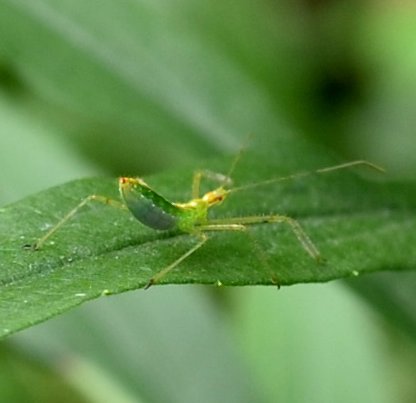
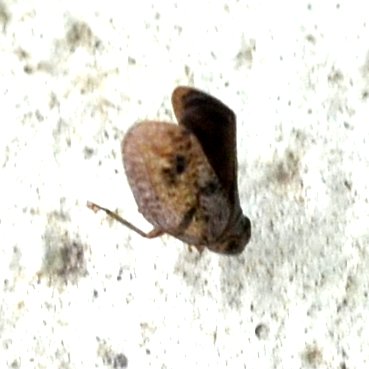
I finally got a side view of one of those tiny green leafhoppers. The candy-stripers really love that goldenrod, the more tender the better! This new leafhopper (Erythroneura elegans) startled me with its beautiful pattern. The final image is of a member of genus Eratoneura, which is a large genus with many specific variations.

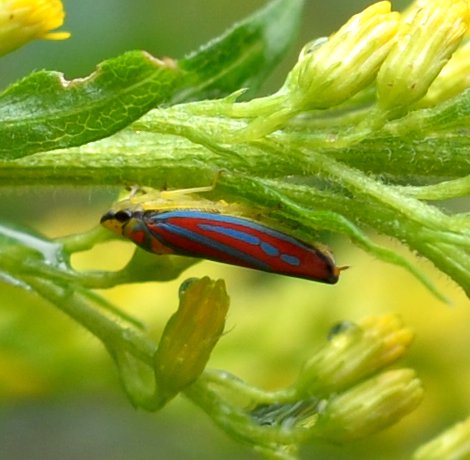
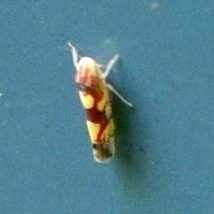
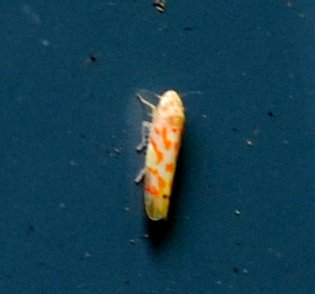
Remember the cute little Coelidia olitoria nymphs with their deeply retroussé little bodies? Here is the adorable Oliver Twist from 2015; adult Coelidia olitoria from this past week; and finally an in-between form - wings still fairly short - but less turned up too. It also seemed about the size of the adult, so I'm puzzled - maybe it is not C. olitoria? More likely it's an older nymph. My guess.

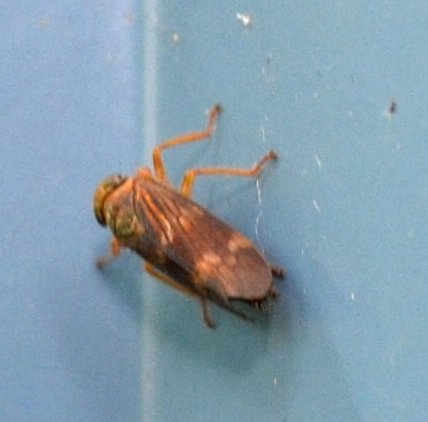
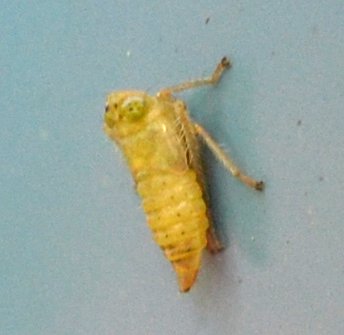
Here's the spittlebug (Alder) we saw before. Next up, a shot of that treehopper in the thistle. Behind it is an ant, absorbing, so it seems, the sweet honeydew that the hopper exudes. Here is that creature I labeled a spider before, sorry about that. My friend Eleanor counted the legs and they were six. I went back through the pictures and found most of them had six. Suddenly I saw a cat's face on the back. (Look for the two eyes first.) Click on it to enlarge it. Here's that tiny stilt bug. (Compare it to the primrose buds.)
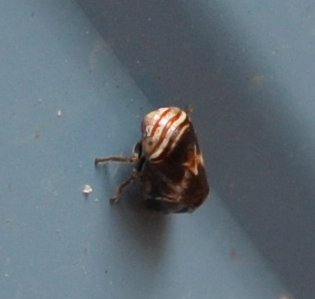
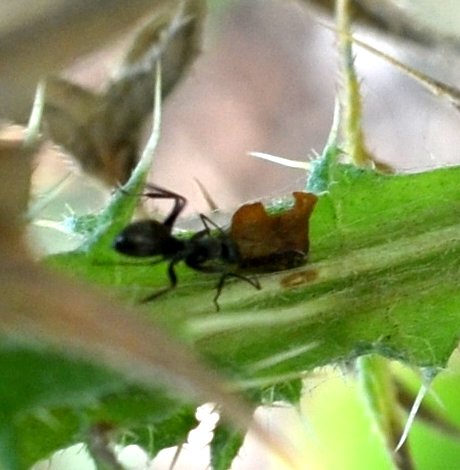

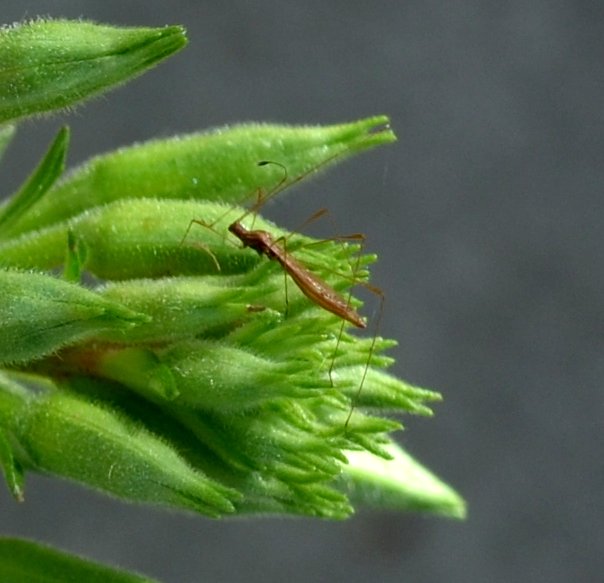
Look how beautifully the tiger swallowtail graces the butterfly bush at my friend Kathleen's. Maybe it's time I install one of those bushes in my garden, er, of horrors. Kathleen also supplied the hickory tussock moth caterpillar. Any takers - is this one a leafhopper or a moth?
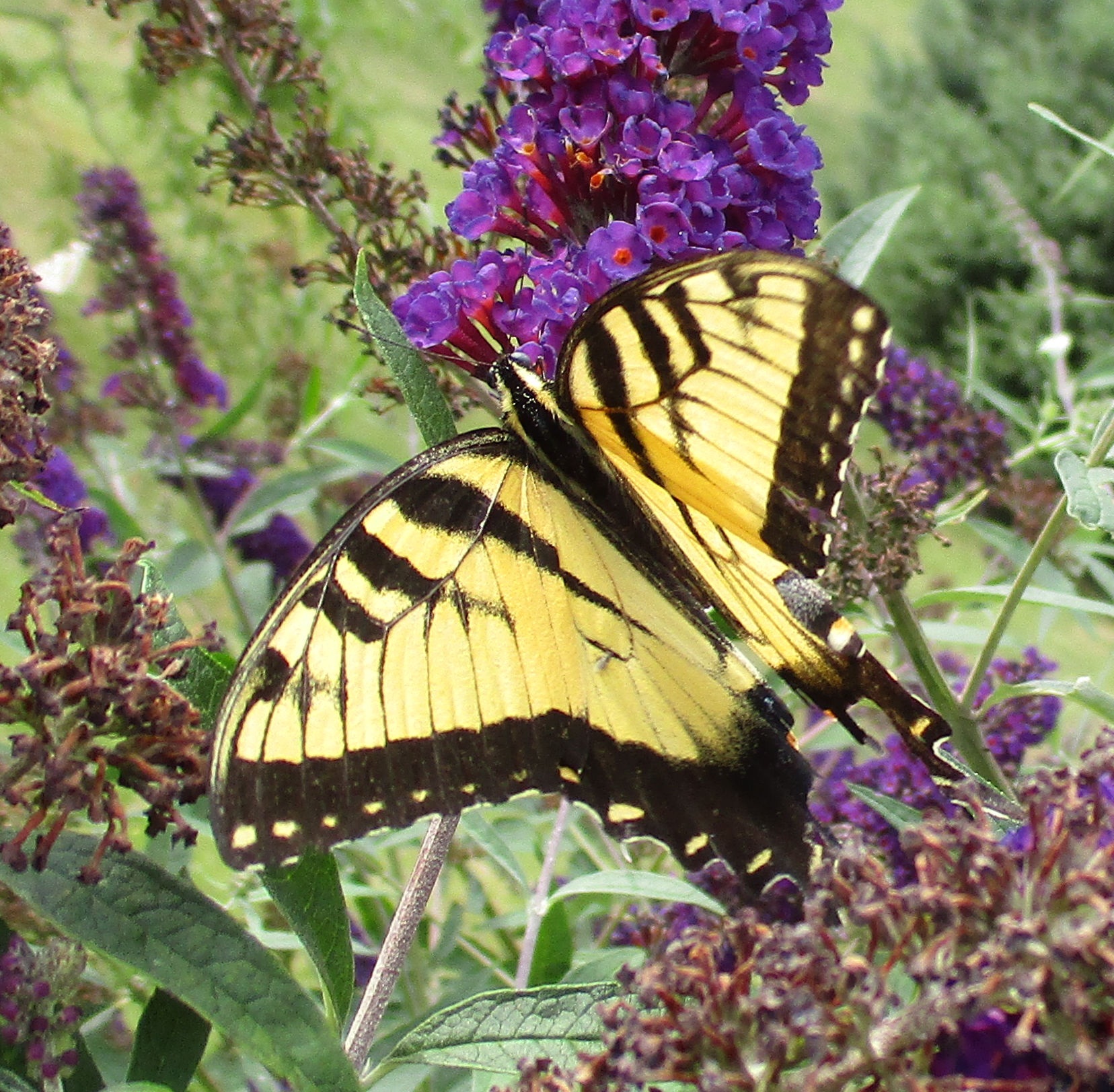
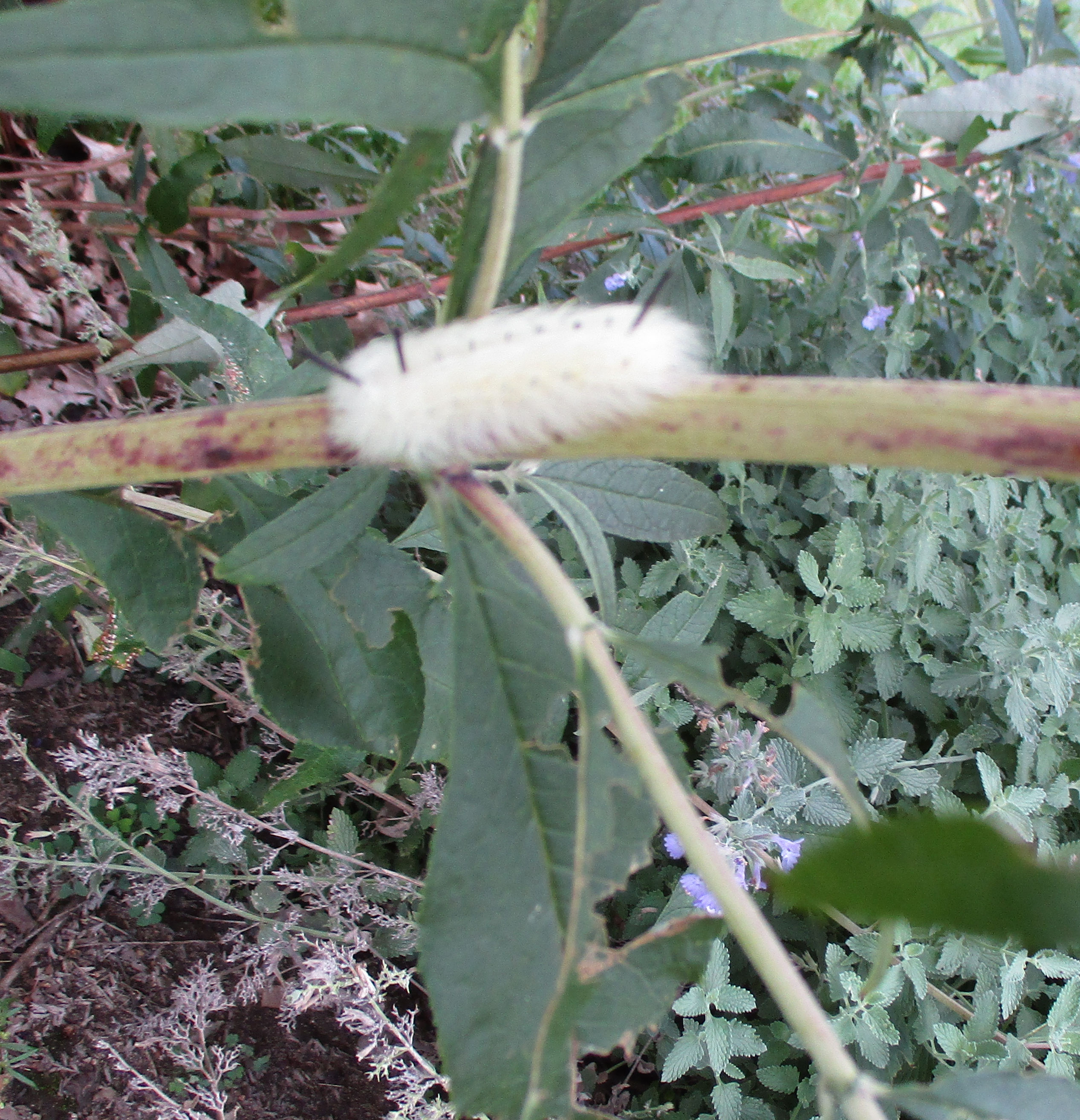

The small versions of the Autumn Meadowhawks are still here. An earwig is settling into the comfy aster blossom. Now the good stuff. I took my camera to the Albion Quad on Monday this past week to watch the eclipse (with one of the 3000 pairs of safety sun-gazing glasses that Dr. Zellner laid in for the occasion). What happened? Usually you see little round points of light under a leafy tree. That's because the minute spaces between leaves form tiny pinhole cameras, so the little round things are each a picture of the sun. Now when the sun becomes a crescent, what do you see on the sidewalk under the tree? Voilà!
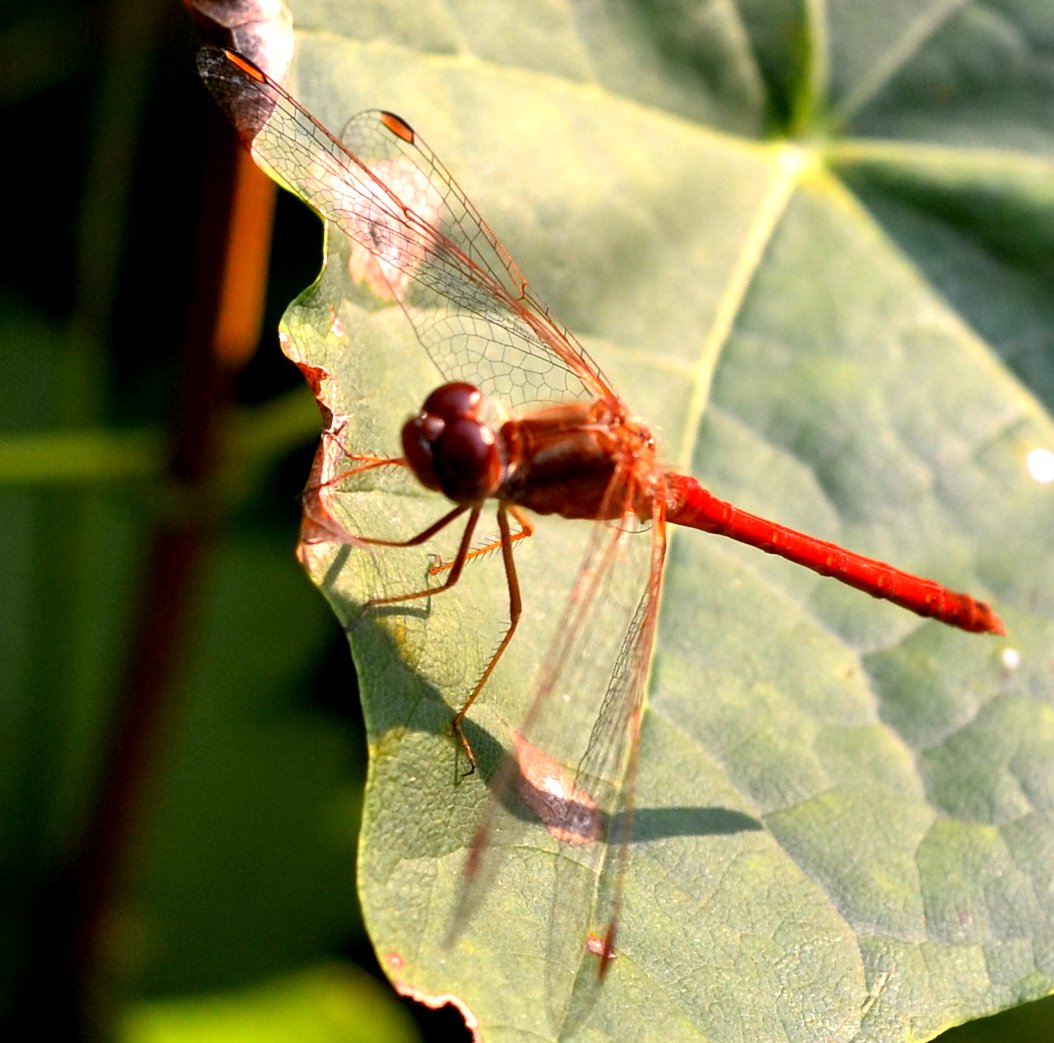
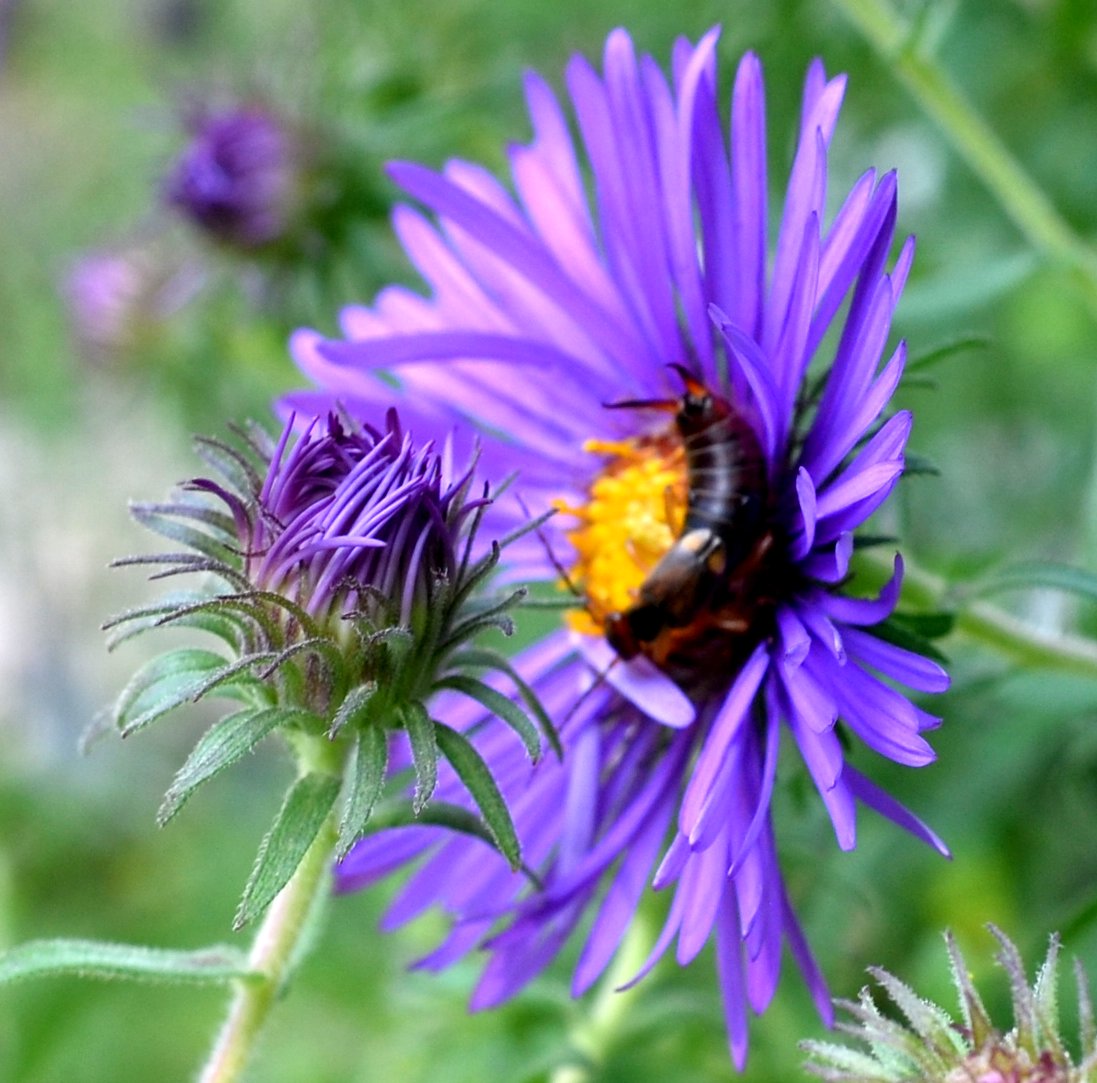
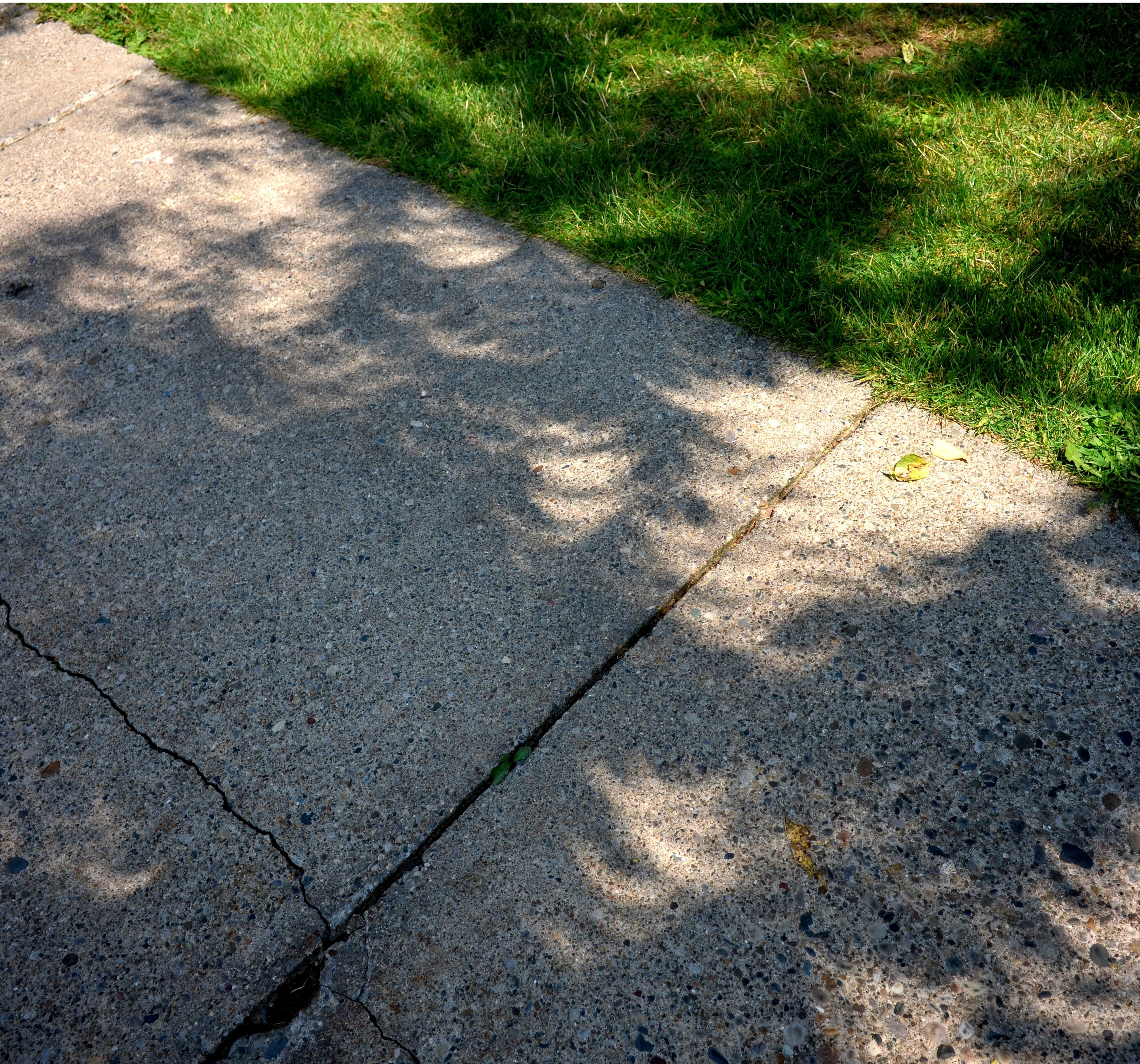
Let's visit the flies! Here's a pretty mosquito; a moth fly; and two kinds of those spotted-wing flies...


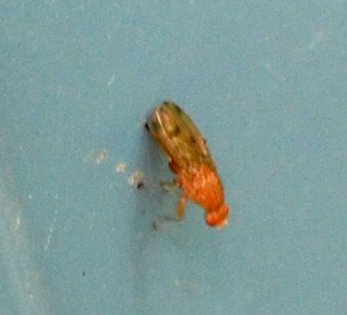

Here is a mysterious fly. I believe I saw reddish orange on the underside. Let me look for one like it in last year's batch. How's this (image 2)? I have kept thinking this was called Loxomera cylindrica and I snapped it last year. You have to wait till goldenrod time to see one of these. Now a question. I first called this one a fly. Then I said to myself, "you have got to be kidding. That's a leafhopper!" So over to you!
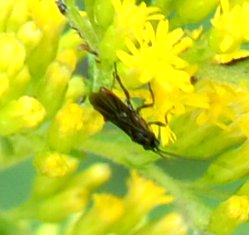
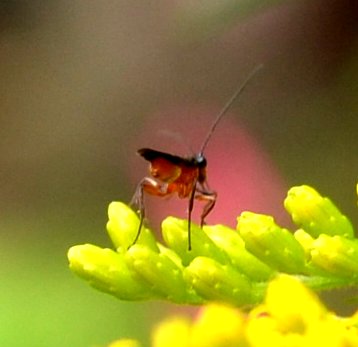
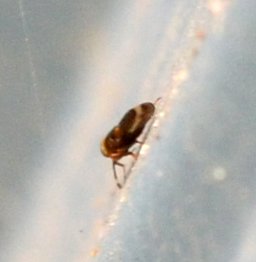
Here's Froggy! You saw him sitting amongst the lilies of the pond earlier. This is so exciting. It's been years since I had a green frog visit and stay for a while. It makes me wonder if he (or she) might have been born in the pond, but if so, I think I would have seen them. The toadlets are pretty distinctive. And here are some harvestmen or daddy (granddaddy)-long-legs. I know you're dying to know: Why do you always show the same kinds of harvestmen? Well, it could be: a) I have very poor eyesight and don't see the other kinds; b)
That's all there are. c:) The others are really ugly and poisonous and they can shoot venom into my eyes. Answer: Maybe I lump them into my own faulty classifications. If you don't like any of those, get your own camera and see how many kinds you see. (And please send them to me!)
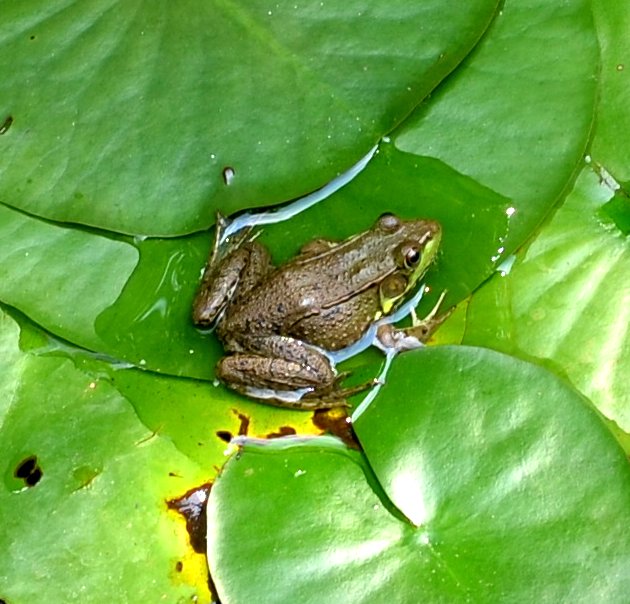
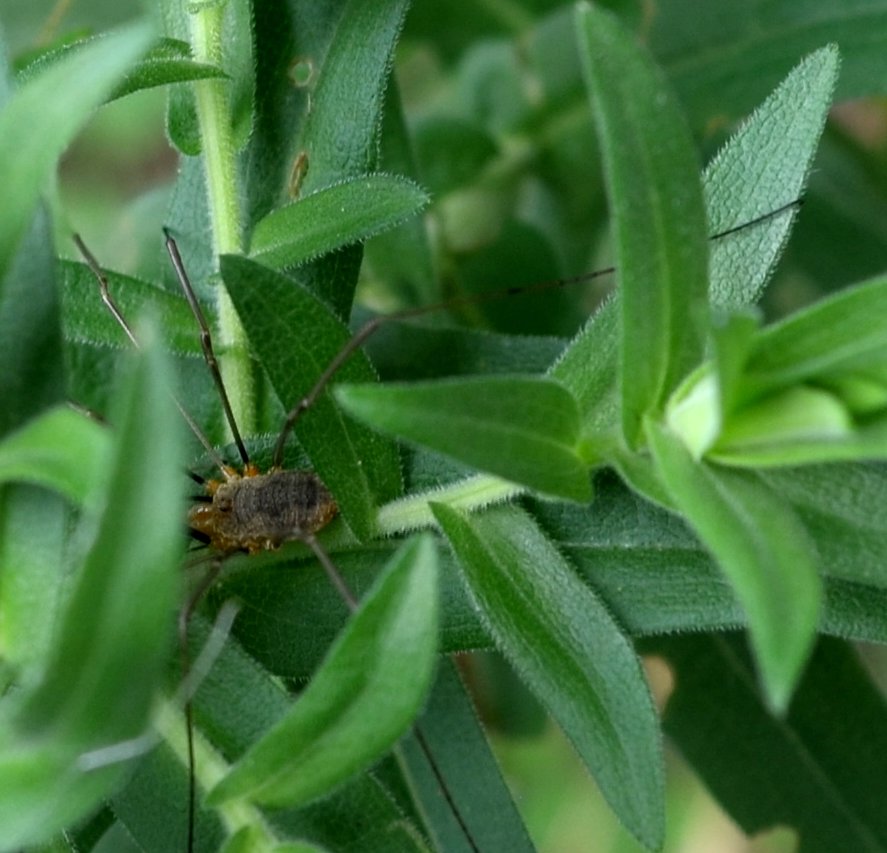
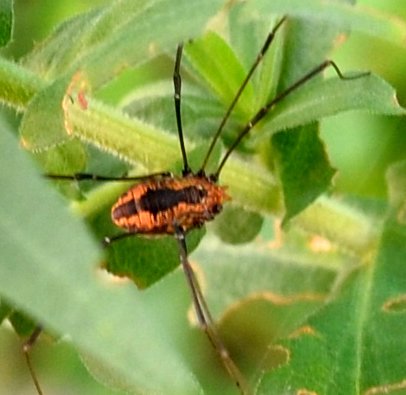

Should we take a look at some more plant life? You know how I love the delicate little nightshade flowers and berries. Kathleen's praying mantis was sitting in her Black-eyed Susan, so that trumps (sorry) the picture of my surprise BES. It now has 7 big blossoms. I hope you're not bored with this hosta with red and purple flowers. I'm thrilled that it did so well this year and I have enough to share some.

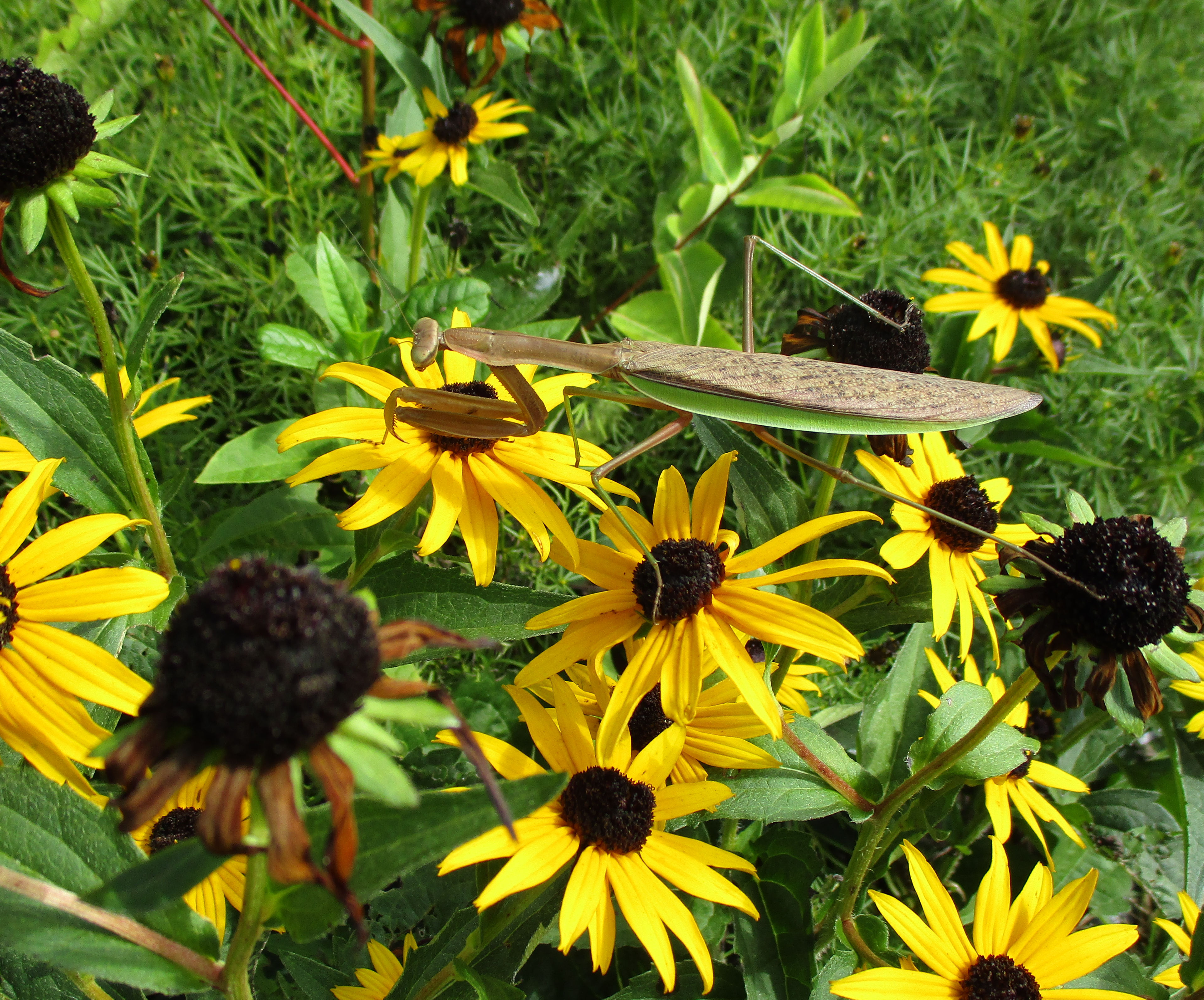
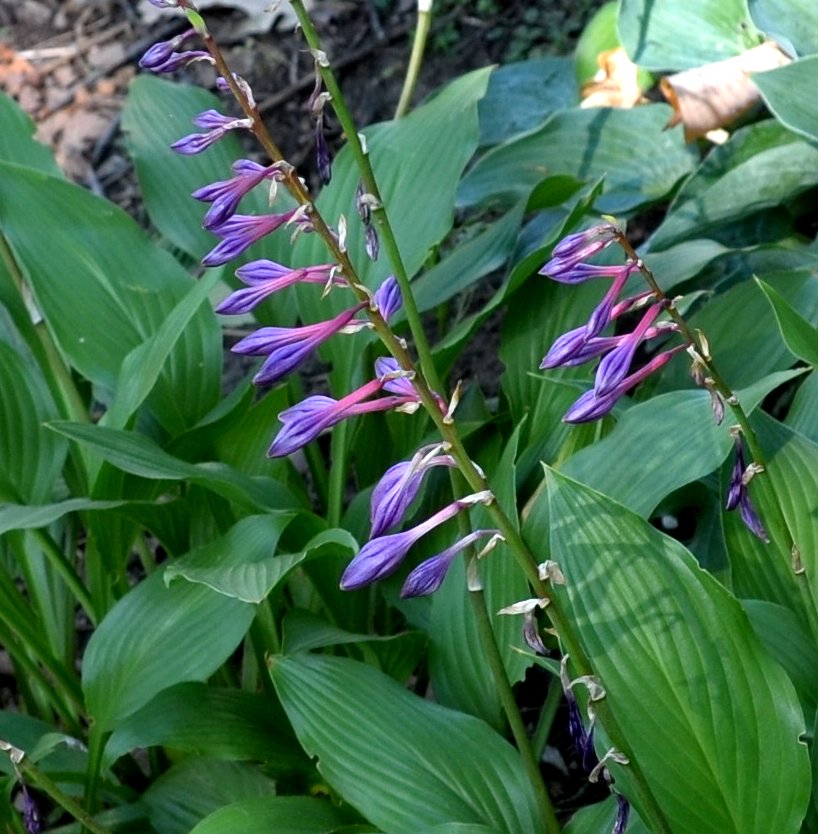
These are a few "orphans", the only pictures of their kind for this week: A brown lacewing; a centipede; and a pillbug from an unfamiliar angle...
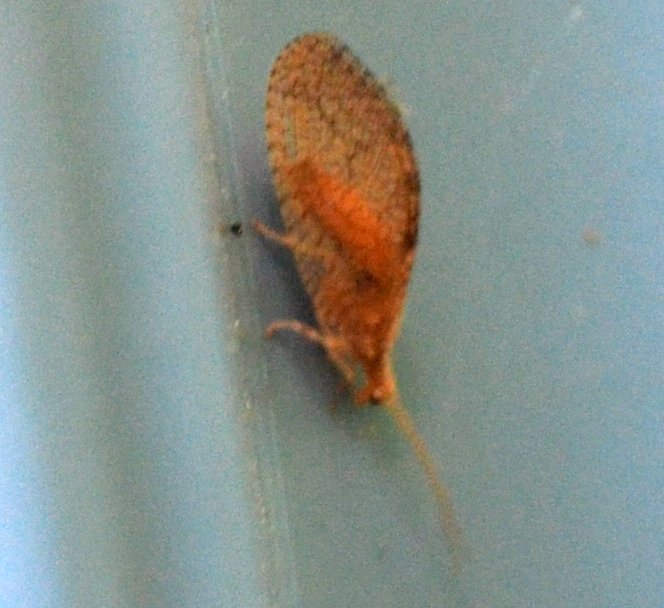
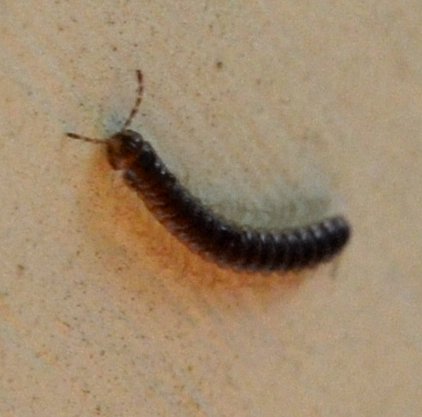
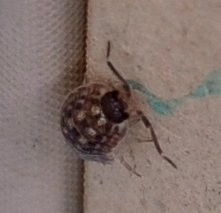
And here are some more moths. For their tiny size, some of them are spectacularly colored. I could be talked into seeing the first two as closely related. The third one was also viewed under possible bugs. I am leaning towards "moth" for it. The fourth was in the big thick patch of Goutweed.
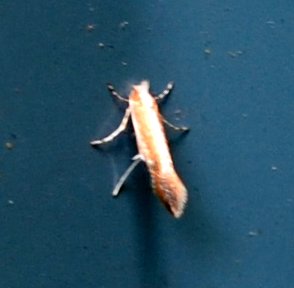


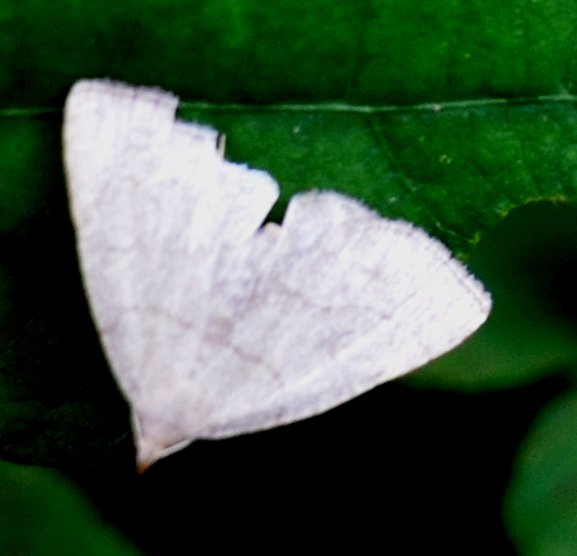
Some more moths.
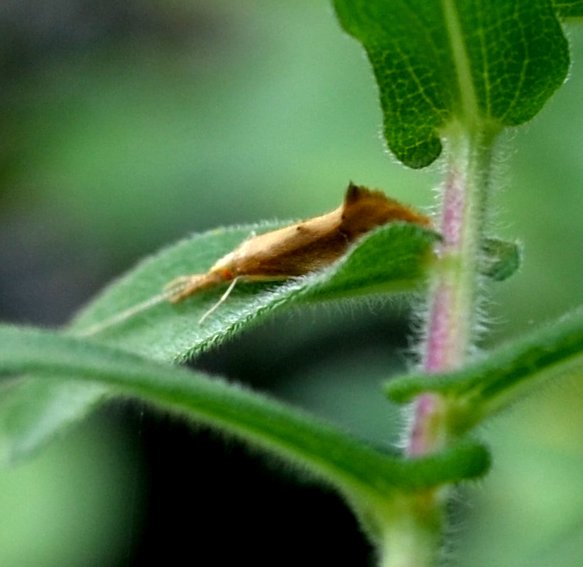
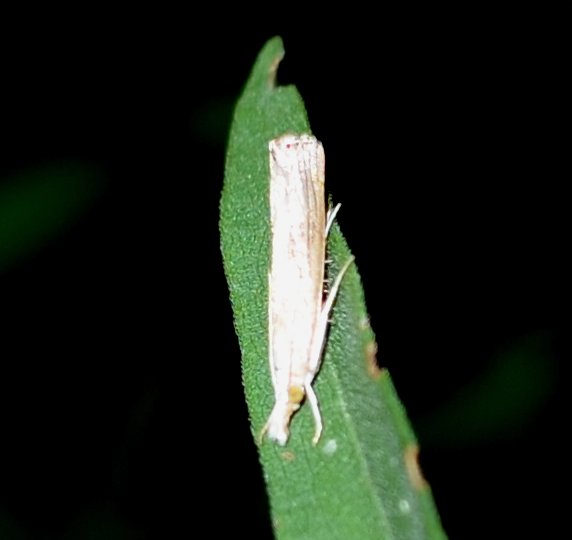
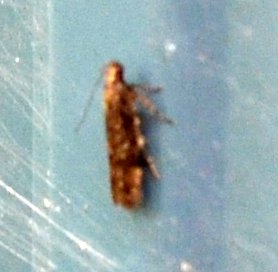 .
.
What can these be? First, a little tiny globule; a reflection of something in a drop of rain; a little green thing in a raspberry bud. The larger picture of a rare raspberry late bud containing the third mystery inside it.
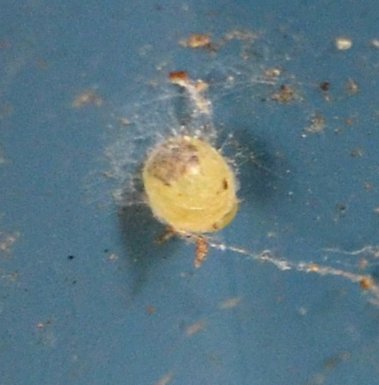
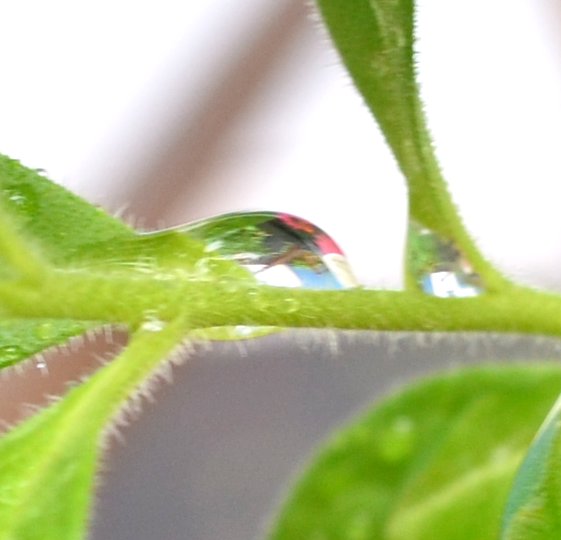
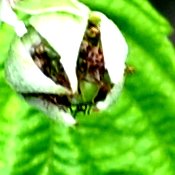
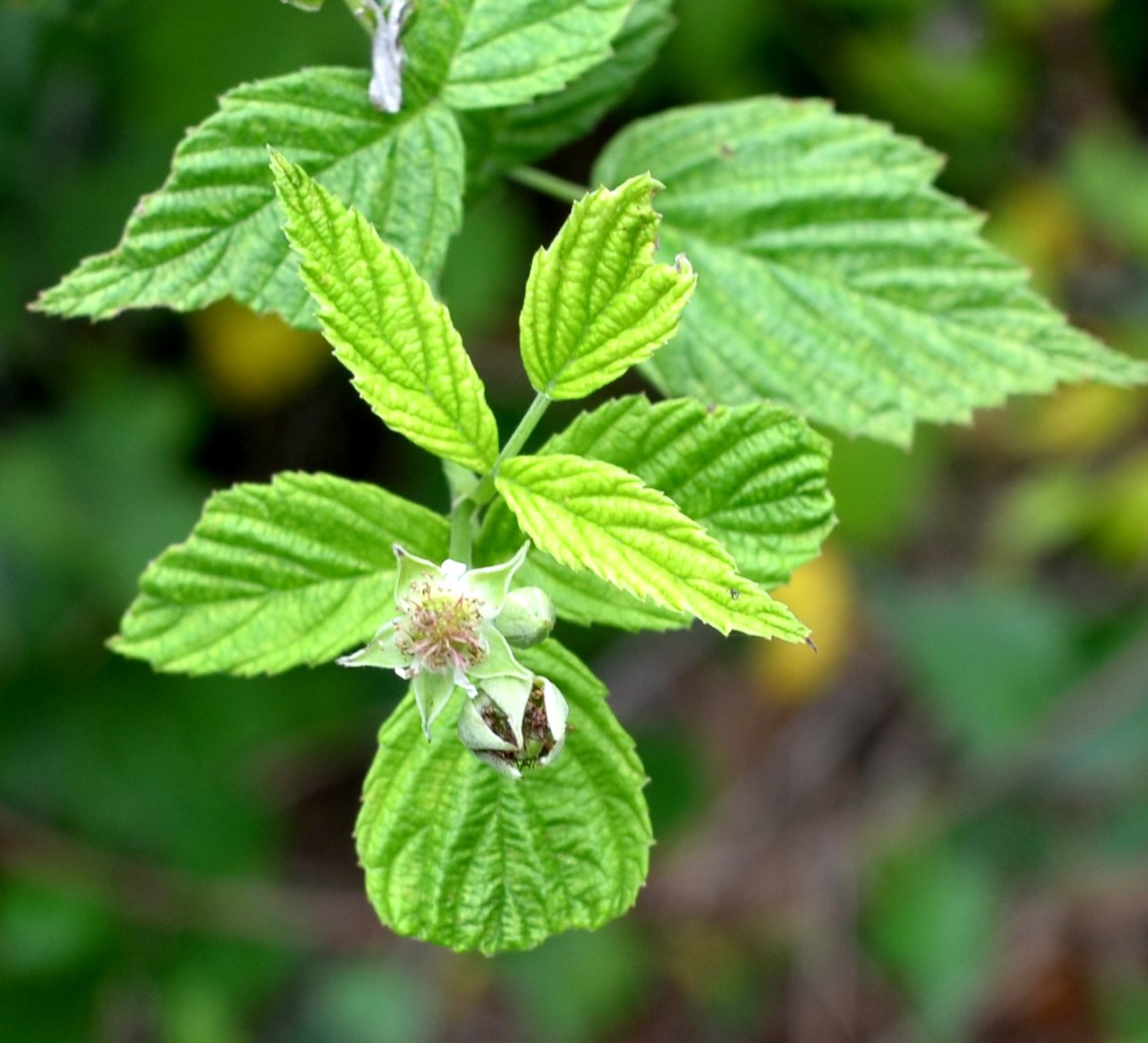
Here is the scorpionfly again. Remember the males roll up their tails like scorpions. Why did this one decide to unroll it (at me)? I haven't seen a female yet this year. Finally a reflection of this Common House Spider (CHS) in the shop wall.


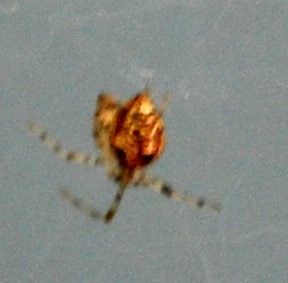
Ah, the spiders. A CHS with a wrapped prey; A crab spider in an aster head; Another colored crab spider and a ground crab spider in an aster plant.

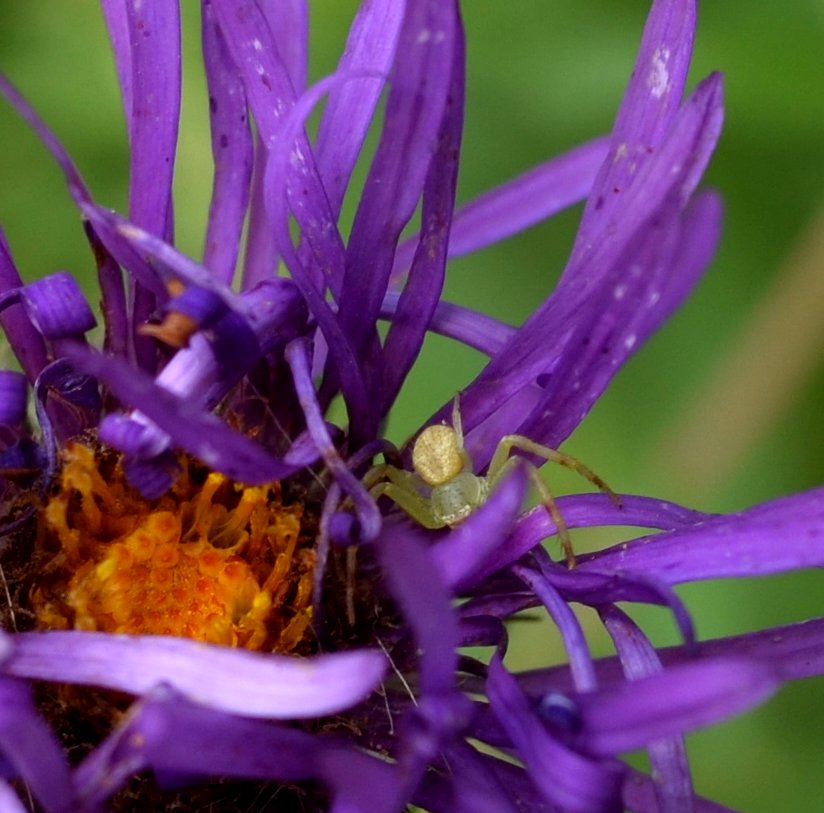
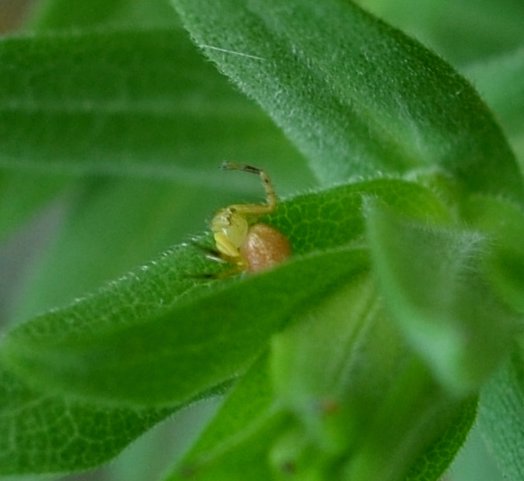
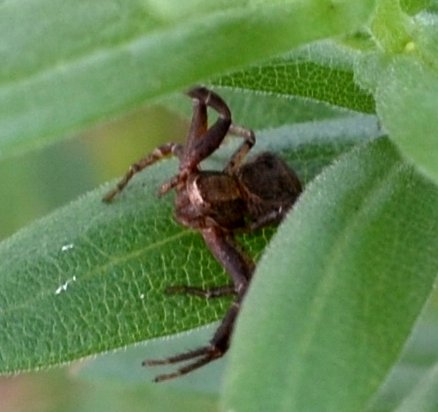
Here's a Northern Crab Spider; a White Crab Spider with prey; Oh my, a crab spider decorated with a girl's face on its abdomen.

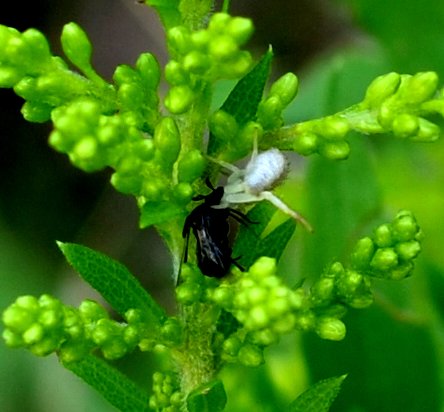

A yellow crab spider; a grass spider; and a mystery spider.
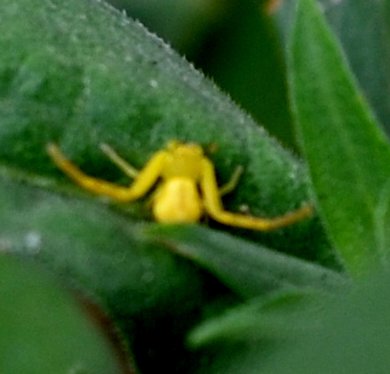
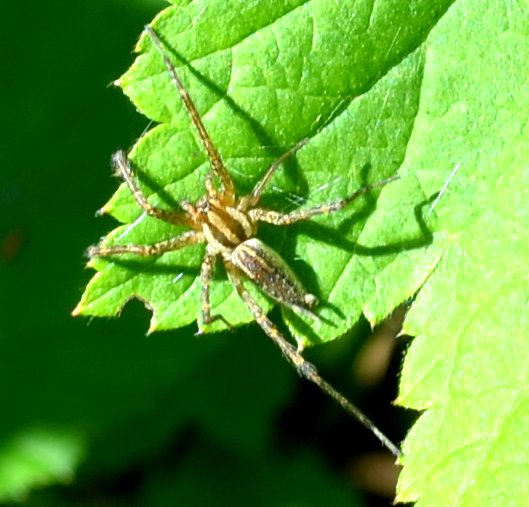
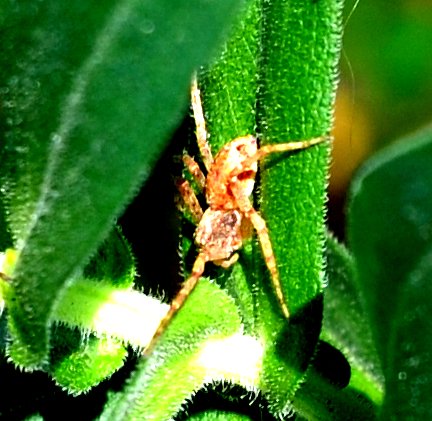
Here are two mystery spiders, and a Cross Orbweaver.
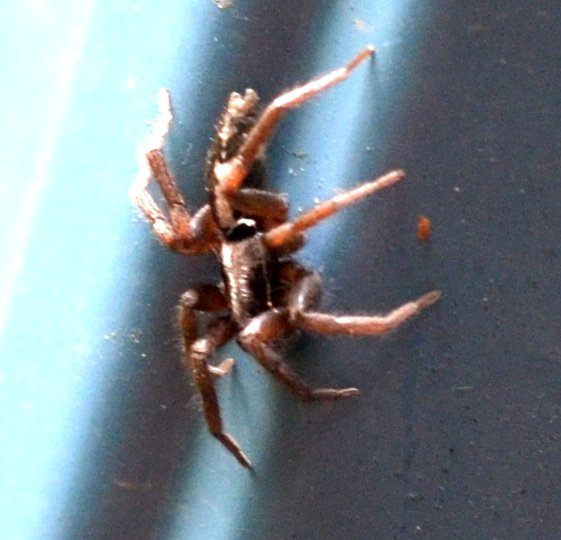
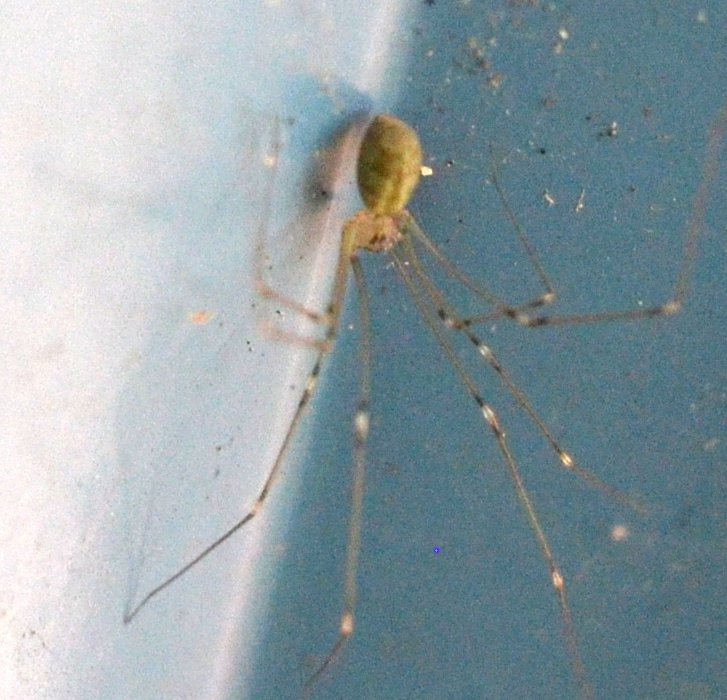
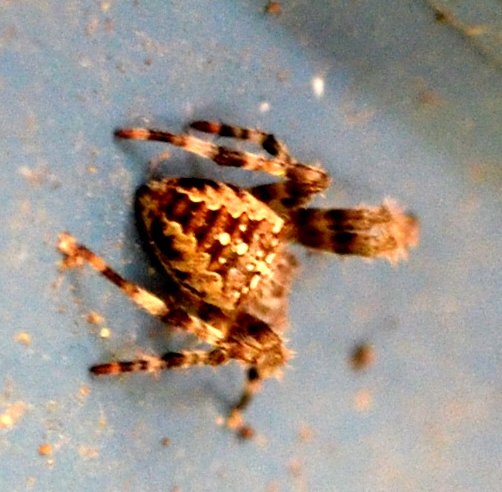
We still have some wasps: quite a few thread-waisted ones. Here are two different thread-waisted wasps, and another with striped abdomen.
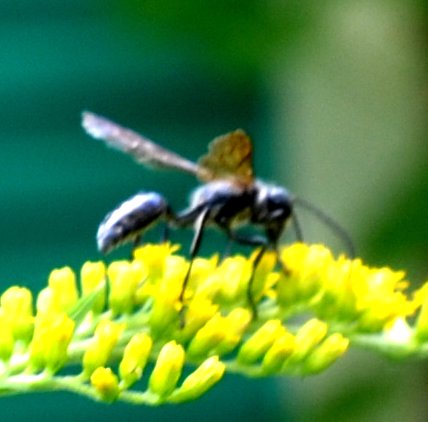

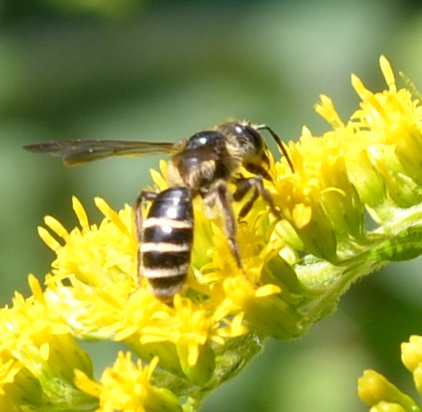
Here is a yellowjacket, Vespula vidua. It is sometimes called a ground hornet. But I'd say the wasp of the week was Philanthus Gibbosus, the bee wolf, which means he hunts bees. It is an interesting little wasp. Unlike many of the little wasps, among whom male and female faces are different and so can be told apart fairly easily. Here is a typical bee wolf from above (from last summer). See the four little marks on the back of the head - they seem to be a distinguishing mark of this species (Philanthus gibbosus). Now look at the face of this third image. Both male and female have similar faces. Today I finally read something from someone else who wanted to explain how you can tell male from female. The picture here is of a female. The male would have a larger dot in the middle of the face. So now you know how to distinguish this bee wolf from another wasp and also to be able to distinguish male and female. A couple of days ago I saw one of these little wasps.. It seemed to be trying to catch other little wasps. But when I was cropping this last picture, it seemed to me that the smaller bee or wasp was actually on top of the bee wolf. What do you think?
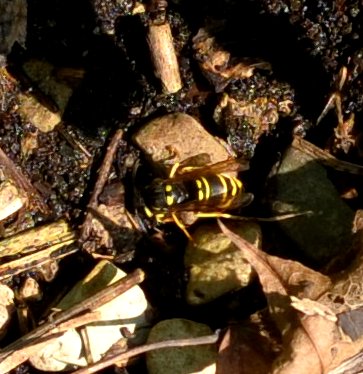
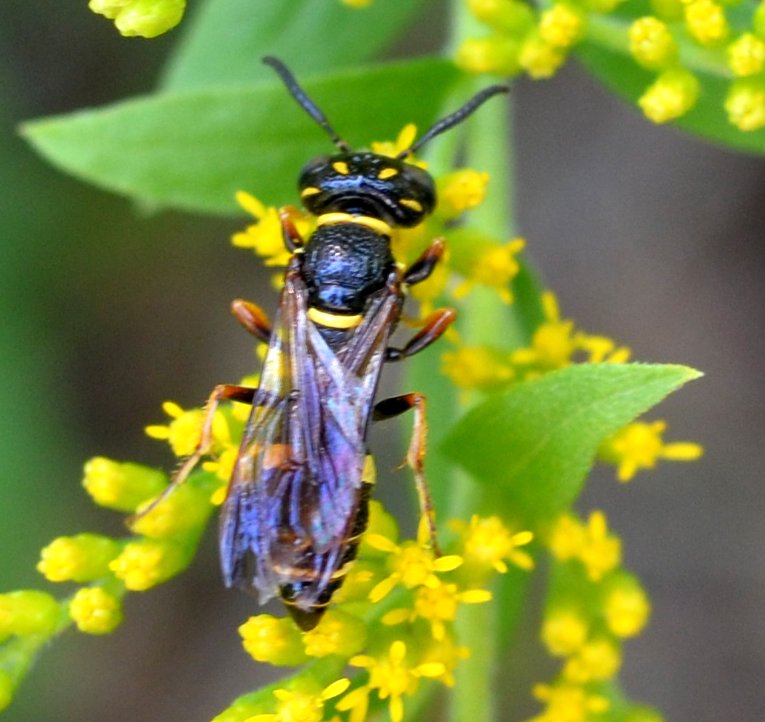
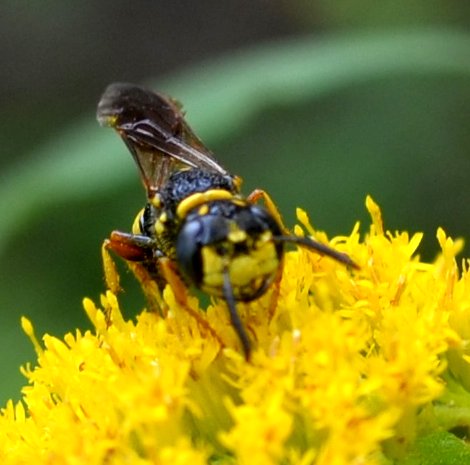

So many little visitors for one week. So many lovely flowers and lovely visitors. I hope you have the chance to just go out and enjoy them. It's hard to imagine summer is almost over. But the air blowing in the window is so wonderful, no need for air conditioning. Have a great week and I'll see you next week.
Love, Martha
Back to August 20, 2017
Forward to September 3, 2017
Back to 2017 menu
copyright Martha O'Kennon 2017




















































































